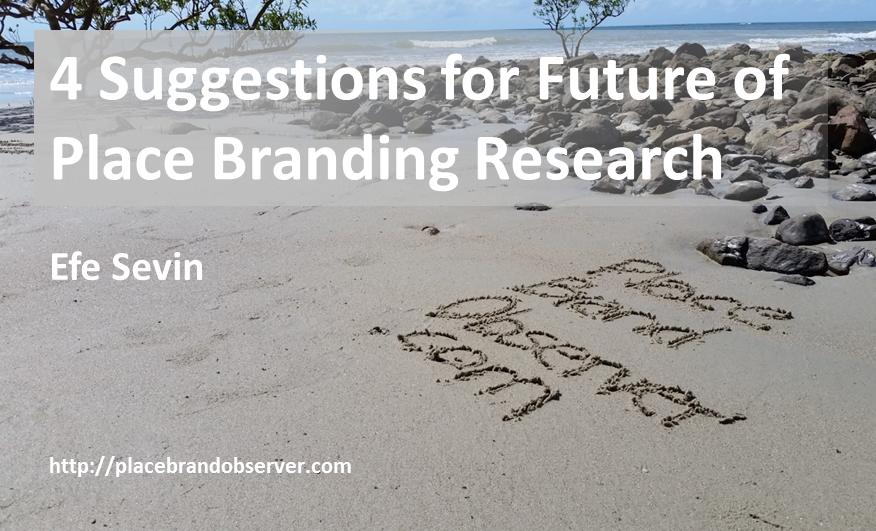Place branding established itself as an acceptable field of research and is building a literature of its own. Even though we cannot necessarily call it a discipline, it is surely not a research fad. In this post, I discuss my ideas on where place branding research will – or rather should – go. I do so by highlighting four areas for research.
1. Learning from and leading the practice
“This research has both practical and theoretical implications” – a phrase that has been used so often that it almost lost all of its meaning. As scholars, we are almost conditioned to include it in all our research proposals, funding requests, and publications. Yet, does this dual-mandate really drive our research? My answer, unfortunately, is no.[1] Academia and practice do not only have different criteria to evaluate research but they also almost have opposite ways of thinking about designing research. In academia, a good research topic is found in existing research. New research fills in the knowledge gaps in existing body of research.
We need to move beyond the boundaries of academia. Place branding is a practice-driven field and should not be separated from practice. More and more journals ask authors to include practical implications. Journal of Place Management and Development and Journal of Communication Management of Emerald Publishing both encourage authors to include such a part in their abstracts. Cities of Elsevier requires authors to submit a “highlights” section summarizing the research in bullet points. I highly appreciate this direction — not only because academics are asked to reflect on how their findings can be implemented, but also because their claims can be delivered in short sentences making it accessible for free.
I recommend seeking new research questions from within the practice areas and try to provide solutions within their framework. In other words, place branding research should reverse our dual-mandate by making practical implications the principal concern and reflect on our theoretical contributions once the research is done. This reverse-dual mandate will also ensure we get to build theoretical frameworks unique to place branding.
2. Niches in practice
I follow the activities of two companies closely as I appreciate their approach to place branding: BOISEN and Tendensor. BOISEN sees place branding as “an identity-driven way of managing places and focuses on unearthing and sharing this identity through an inside-out approach. Tendensor puts talent and business attraction forward. From a more competitive perspective, their practice highlights the distinctiveness of places.
Both practitioners are very successful place brand advisors – yet what they do is not necessarily the same. Based on the objectives of the place branding project, as well as the needs and assets of cities, place branding campaigns can turn out to be very different from each other. For instance, consider two hypothetical campaigns: one helping a developed economy to attract more foreign investment and another helping a small island nation to increase its tourism revenues.
Future research should identify clusters of practice composed of projects that resemble each other but are different from the ones in other clusters. In doing so, it will help practitioners by providing them tailored recommendations, rather than generic place branding strategies.
3. Ethics of place branding
More often than not, place branding is a public administration function – in this manner, it uses public funds, and its outcomes affect citizens. Therefore, there needs to be a better and clearer understanding of the ethics of place branding. There are already a few papers discussing the governance aspects and ethics of the practice (here, here, and here). What we need – what the practice needs – is a clearly defined code of ethics.
Even though this might sound like a practice issue, in line with my earlier arguments about learning from and leading the practice, I believe there is a need for scholarly contribution. A good example of such a code belongs to Public Relations Society of America. The organization lists both possible ethical dilemmas and provides examples for each and every scenario.
Future research in place branding should consider identifying potential pitfalls while keeping in mind that practice uses funds that could have been diverted to other social needs and has the potential to shape places.
4. Social media and communication
How can one talk about the ‘future’ of something without mentioning the seismic shift toward digital communication and social media? These tools, especially those that enable users to create their own messages (i.e. posts, blogs, etc.), have influenced all communication processes. Place branding scholars have spent a vast amount of time and resources to discuss the impacts of social media.
Future research should refrain from focusing on specific platforms, and instead, study the needs of the practice and the challenges brought in by the technological changes.
The characteristics of specific platforms are meaningless from a place branding communication perspective – they are research fads.[2] Scholars should study how places can most effectively communicate with their target audiences at a strategy / an abstract level. The findings of such research can be used to develop the necessary platform.
However, focusing on the needs and challenges does not mean existing technologies and developments should be completely forgotten. Studies should focus on explaining how the new media ecology is changing the communication patterns.
For instance, in my work(s), I discuss the increased volume of messages and the decreased credibility of official messages. Your target audience is bombarded with messages and has limited time or attention. A place advertisement needs to compete with millions[3] of ‘cat playing the piano’ videos on YouTube for an audience’s attention.
Moreover, your well-crafted advertisement might not create the desired impact if users post negative comments. Target audiences are more likely to believe messages coming from other users, rather than an organization that is paid to promote a place. Future research should identify further changes brought in by the new media ecology.
In short, the future of place branding research lies in strengthening our ties with the practice. Based on the four issues I have raised, I would like to sign off with four unsolicited bits of advice for my colleagues:
- Look at the practice to find your research questions! This advice also goes for graduate students that are working on their theses/dissertations. Let the practice lead your research design.
- Let place branding be an umbrella concept. Find niche practice areas instead of pushing each and every project into the same frameworks.
- Remind the practice of its ethical responsibility.
- Follow not only the communication trends but also the communication needs of the practice.
[1] This issue has been on my agenda for at least five years.
[2] If you think this argument is an exaggeration, check out your MySpace page.
[3] To be perfectly honest, “cat playing the piano” search only results in 530,000 hits. But, I am pretty sure we will hit “millions” before the end of 2016.
 About the author
About the author
Efe Sevin is a faculty member at the Department of Public Relations and Information of Kadir Has University, Istanbul, Turkey. His current research focuses on the role of public diplomacy and nation branding on achieving foreign policy objectives. In his role as Academic Observer, Efe shares his thoughts on place branding as academic discipline.



For the academic discussion on future venues of research I would like to add a fifth to Efe’s four:
5. Test the existing theoretical frameworks in the literature by confronting them analytically with the practice. And do so primarily by using multiple case-studies instead of single-case profiles.
Thank you, Martin. Those are very good points. It is difficult to find multiple case studies of theory tested in practice. If you know of any, please let us know and we’ll share – Florian
Honored (and slightly spooked), to be one of the advisors Efe follows so closely. And good to be in such good company with Marcus Anderson / Tendensor.